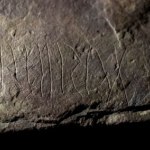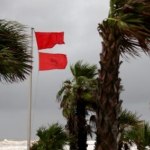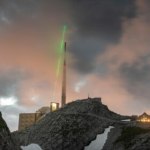23 January 2023
Have you ever seen a tree covered in parts with green growth and wondered what it was? Were you concerned that the spreading green life might hurt the tree?
Well, no need to worry. Those growths could be lichens, moss or algae, and none of them threaten the tree's health.
They are not parasites.

This Jan. 4, 2023, photo provided by Jessica Damiano shows light green masses called lichens growing on a maple tree on Long Island, NY. (Jessica Damiano via AP)
Lichens
Lichens are symbiotic organisms of fungi, algae and possibly yeast. The organisms spread on the tree but they do not live off it. They live off each other. And, they all favor trees that are sick or growing in poor conditions.
The growth usually presents as pale green or gray, but sometimes even orange. The growth is normally crusty or leafy masses on tree branches and trunks.
The growth of lichens is actually a sign of good environmental health as they will not survive in polluted areas. If lichens are present, the air quality in the area must be good.
But it also tells you that the tree was sick enough to appeal to lichens. So, you might want to give the tree some extra healing care.
Water the tree, aerate the soil around it, and place mulch along the root zone. The area begins 10 centimeters away from the trunk. It extends as far as the branches above reach out.
Moss
Moss is another non-parasitic organism that thrives in wettish conditions and grows on trees, among other things. It likes shady areas.
Moss grows in green or yellow mats. It favors low soil fertility, acidic pH levels and dense soil. In most cases, moss growth is harmless. But if the growth becomes very large, its weight could damage branches.
To limit moss growth on a tree, remove branches in the center of the canopy. This will permit more sunlight and better airflow. You can also gently scrape the moss off the tree. You can also remove it with a chemical that kills fungi.
Algae
Algae is usually considered a water plant. However, it can also grow on trees, paths, roofs, fences and houses. Like moss, it likes shade and some wetness. Algae's green or orange covering can be washed away with a powerful water hose.
You can also create a wash solution that can slow algae growth. Mix about 30 milliliters of chlorine bleach or white vinegar with about 3.7 liters of water. Apply the solution directly on the algae.
It is not necessary to remove algae from trees. But, you can if you want. Just spray affected areas with five grams of copper sulfate mixed into 30 milliliters of water.
The algae will likely regrow in the area, however, if shady, wettish conditions remain in place.
I'm Caty Weaver.
Jessica Damiano wrote this story for Associated Press. Caty Weaver adapted it for VOA Learning English.
_
Words in This Story
parasite – n. an organism living in, on, or with another organism in order to obtain nutrients, grow, or multiply often in a state that directly or indirectly harms the host
symbiotic – adj. characterized by or being a close, cooperative, or interdependent relationship
crusty – adj. a hard surface layer
aerate – v. to expose to or supply or fill to the limit with air
thrive – v. to grow extremely well
shady – adj. sheltered from the sun's rays
canopy – n. the uppermost spreading branchy layer of trees












